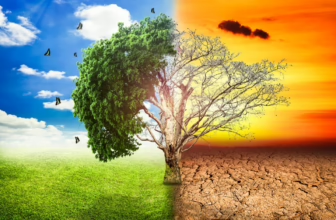Gratitude is more than saying “thank you.” It is a mindset that shifts focus from what we lack to what we already have. In a world filled with constant pressures, comparisons, and distractions, gratitude offers a way to reconnect with joy.
Practicing gratitude doesn’t just feel good—it has measurable effects on mental health, relationships, and even physical well-being. Research indicates that incorporating gratitude into daily life can lead to increased happiness and greater resilience.
What Is Gratitude?
Gratitude is the recognition and appreciation of the positive aspects of life. It can be directed toward people, experiences, or even small daily moments, such as enjoying a warm meal or hearing laughter.
Unlike fleeting happiness from external rewards, gratitude builds a deeper, more lasting sense of contentment.
The Science of Gratitude and Happiness
Researchers have studied gratitude for decades, and the results are consistent: gratitude boosts happiness.
- Psychologists Robert Emmons and Michael McCullough conducted a study where participants wrote down things they were grateful for each week. Those who practiced gratitude reported 25% greater happiness compared to those who focused on daily hassles【Emmons & McCullough, 2003】.
- A study in the Journal of Personality and Social Psychology found that gratitude increased life satisfaction and reduced depressive symptoms【Wood et al., 2010】.
- According to the Greater Good Science Center at UC Berkeley, gratitude practices strengthen the brain’s “reward pathways,” similar to how joy and connection do【GGSC, 2019】.
These findings confirm what many people experience: when we notice and appreciate the good, our mood and outlook improve.
How Gratitude Changes the Brain
Gratitude is not only emotional—it’s neurological.
- Boosts dopamine and serotonin – These “feel-good” chemicals increase when we practice gratitude, enhancing mood.
- Activates the prefrontal cortex – Gratitude strengthens areas of the brain responsible for decision-making and emotional regulation.
- Reduces stress responses – Practicing gratitude lowers cortisol levels, the body’s main stress hormone【APA, 2020】.
Simply put, gratitude rewires the brain toward positivity and resilience.
Emotional Benefits of Gratitude
1. Increases Positive Emotions
Gratitude helps us notice small joys and victories, which creates more frequent moments of happiness.
2. Reduces Negative Thinking
By focusing on what’s going well, gratitude shifts attention away from rumination and worry.
3. Strengthens Resilience
Grateful people recover faster from stress and setbacks because they see challenges within a bigger picture of life.
Gratitude and Relationships
Gratitude is not just personal—it strengthens connections with others.
- Saying thank you deepens bonds and builds trust.
- Studies show that expressing gratitude to a partner improves relationship satisfaction【Algoe, 2012】.
- In workplaces, gratitude improves teamwork and morale. Employees who feel appreciated are more motivated and engaged【APA, 2019】.
When gratitude is shared, happiness multiplies.
Practical Gratitude Practices
Gratitude doesn’t need to be complicated. Here are simple ways to start:
1. Keep a Gratitude Journal
Write down 3–5 things you’re grateful for each day. Over time, this practice trains the brain to notice positives more easily.
2. Express Appreciation to Others
Send a text, write a note, or simply say thank you with sincerity. Expressing gratitude boosts happiness for both giver and receiver.
3. Practice Gratitude in the Moment
Pause during the day to notice small joys—a sunrise, a kind gesture, or a good cup of coffee.
4. Gratitude Meditation
Spend a few minutes reflecting on the people or experiences you’re thankful for. This can be part of a mindfulness practice.
5. Gratitude Jar
Write daily notes of gratitude and place them in a jar. Revisit them at the end of the month or year to reflect on positive moments.
Overcoming Barriers to Gratitude
Some people struggle to feel grateful when facing hardships. Gratitude does not mean ignoring pain or pretending everything is fine. Instead, it means acknowledging small positives even in tough times.
For example, during stress, a person might be grateful for a supportive friend, a quiet moment, or personal strength. These small anchors of gratitude build resilience and reduce emotional fatigue.
Gratitude and Physical Health
Happiness is not the only benefit of gratitude—physical health improves too.
- A study in Personality and Individual Differences found that grateful people reported better sleep quality and fewer physical health complaints【Ng & Wong, 2013】.
- Gratitude is linked to lower blood pressure, reduced inflammation, and stronger immunity【Mayo Clinic, 2022】.
This shows that gratitude supports the mind and body alike.
Making Gratitude a Habit
Like any practice, gratitude grows stronger with consistency. Here’s how to make it part of daily life:
- Pair journaling with existing routines, like morning coffee or bedtime.
- Set reminders on your phone to pause and reflect.
- Share gratitude moments at family meals or team meetings.
- Be patient—gratitude builds gradually, but the benefits last.
Conclusion
Gratitude practices are simple yet powerful tools to improve happiness. By shifting focus from what’s missing to what’s present, gratitude reduces stress, strengthens relationships, and builds resilience.
The science is clear: gratitude changes the brain and body, fostering lasting joy. But beyond the research, the experience is deeply human. Gratitude reminds us that even in difficult times, there are moments of light worth noticing.
Follow me down the rabbit hole!
I'm Alice and I live with a dizzying assortment of invisible disabilities, including ADHD and fibromyalgia. I write to raise awareness and end the stigma surrounding mental and chronic illnesses of all kinds.








